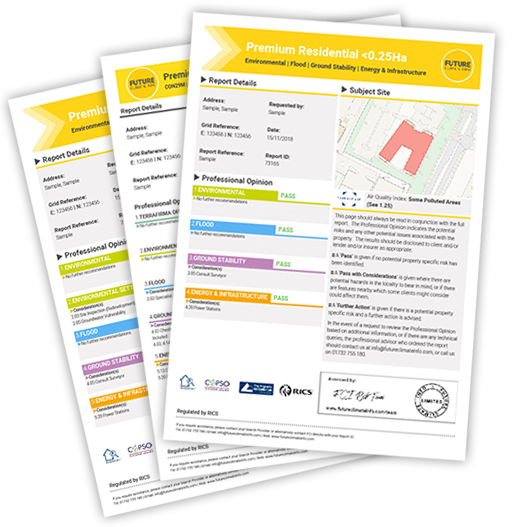
Climate Change: More Trees More Quickly!
A significant increase in tree planting is needed in the UK quickly if other targets to cut carbon are not met, according to the Committee on Climate Change (CCC)
The Government adviser has recommended that at least 30,000 hectares (Ha) of woodland must be planted annually until 2050. This is more than double the rate planted last year. They stress that if other carbon reduction targets are not met then this figure may have to rise to 50,000 Ha per year. This equates to an increase from 13% to 17% of land in the UK.
The Woodland Trust has said this would be equivalent to about 1.5 billion new trees. This is a necessity so that future generations would not be “let down” by poorer air quality and rising “urban heat”. These targets form part of the Government’s wider commitment to the CCC goal of the UK cutting all greenhouse gas emissions to net zero by 2050.
Imbalanced Picture
There are a number of issues that lie ahead in the balanced delivery of tree cover against these targets. It takes time for trees to grow and absorb carbon. There are high upfront costs to planting trees and there is a clear need for an economic incentive for this to happen.
Between April 2018 and March 2019, just 13,400 Ha were planted, the vast majority of which were in Scotland (11,210 Ha). Indeed England, which of course contains the most population and emissions, accounted for just 1420 Ha.
Of those numbers in England, more than a quarter were planted in just five areas – Northumberland, Stratford-upon-Avon, Eden, Carlisle and County Durham.
So, this can hardly be described as a balanced and uniform approach to tree planting.
There are clearly some planning constraint and land availability issues that limit the conversion of plots to woodland. Maximising rural property assets and setting aside land for residential development to meet local housing need has been a more lucrative priority.
Over the same period though, there has been a growing urgency to respond to climate change and mitigate the emissions that are accelerating it.
Funds and Incentives
The central issue is incentivising farmers to set aside land for tree planting. While planting has increased in the past four years, the last time the UK planted 30,000 Ha of trees in one year was in 1989, as the timber industry pushed to increase the country’s lumber supply.
With Brexit and the threat of a no deal potentially impacting on animal farmers in particular, the Government could look to accelerate support for new farming income sources to protect their livelihoods.
Landowners in England can apply for up to £6,800 of funding per Ha of land for planting projects. Another scheme providing £10m for 130,000 “urban trees” in towns and cities has also been announced.
The Department for the Environment, Food and Rural Affairs (Defra) has also reduced the minimum planting site size in England from 30 Ha to 10 Ha. The aim is to encourage people with smaller plots of land to join up.
There are separate schemes for land in Scotland, Wales and Northern Ireland.
Earlier this year, the Government also announced the Urban Tree Challenge Fund. This offers grants worth £10m over 2 years to plant over 130,000 trees in England’s towns and cities. The scheme is administered by the Forestry Commission and is open to individuals, Local Authorities, charities and NGOs.
Defra has defended the scheme so far, by stating that cities that had received no funding, including Liverpool, Bristol, Croydon and Leicester – were “major metropolitan areas” with “little land available for planting”.
Clear Benefits
But it can be argued that in spite of space constraints, trees and hedging of any number have been proven to significantly reduce localised levels of traffic pollution. This in turn reduces respiratory illness and other health issues with local residents. It also reduces the “urban heat island effect”. Trees easily absorb heat from buildings and roads through the day and release it steadily at night.
Planting trees in upland river catchments also helps to slow the flow of surface flooding. Planting alongside upland riverbanks helps retain soil cover, encourage biomass and absorbs surface water before it is transmitted to rivers and down to more populated areas. This in turn reduces the threat of flooding in communities. Our recent case study in Pickering is a great example of Natural Flood Management at work.
Future Goals
Defra has said that since 2010 over 15 million trees have been planted [in England] and that this “is a clear commitment through our 25-year Environment Plan to grow woodland cover further.”
They plan to consult on an “English Tree Strategy” which would set out how it would “rapidly grow forest cover”.
The Scottish Government’s current goal is to plant 15,000 hectares of trees per year by 2025. The Welsh Government has set a target of planting 2,000 hectares each year from 2020.
Officials in Northern Ireland say they want to increase the country’s forest areas from 8% of land to 12% by the middle of the century.
Here at Future Climate Info, we are passionate about helping home buyers and their conveyancers understand how our changing climate could impact on their property through our Environmental Reports. We believe that widespread incentivisation of landowners for tree planting will make a significant impact on reducing flood risk and air pollution.
We will be playing a very active role in modelling how climate change is adapting these risks. We will also be providing corporate support to contribute to accelerating tree planting across the country in a balanced way.
Try before you buy
To take advantage of a trial free order of your first environmental report, please complete the enquiry form and we will get back to you as soon as possible. We will need to take more details of the property or site and ask some more questions about your firm and the transaction.

